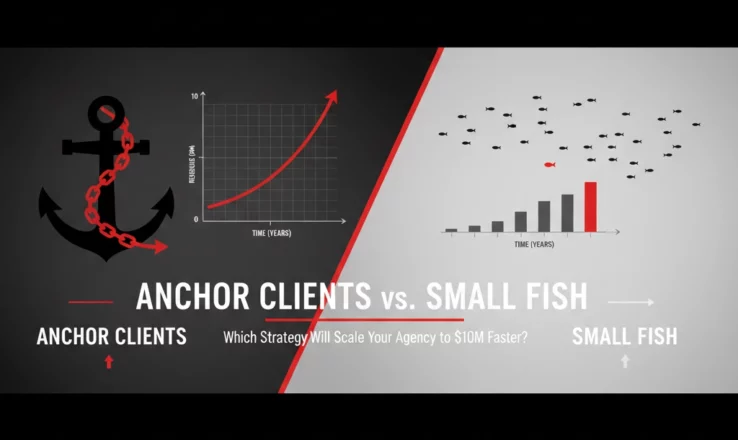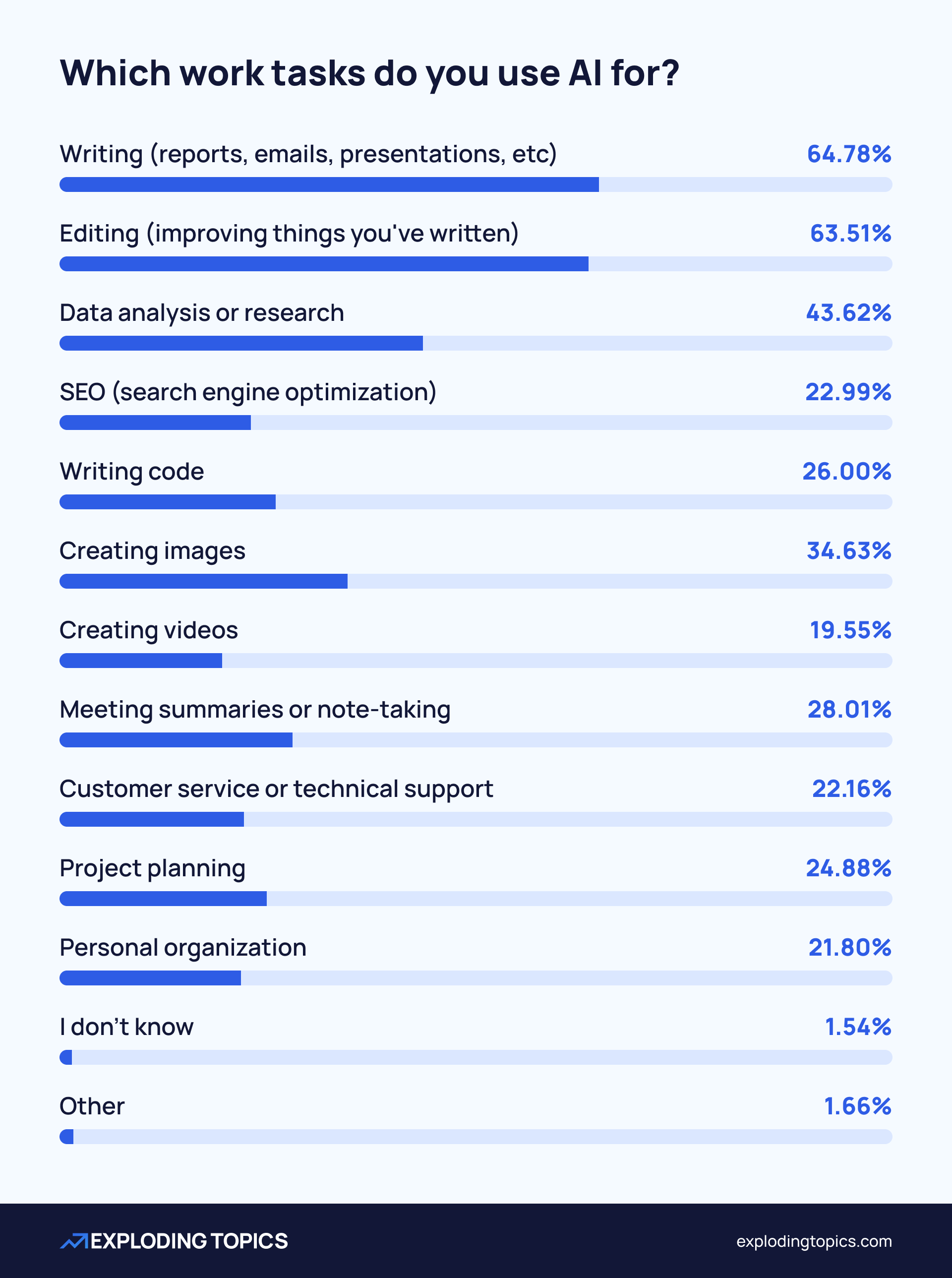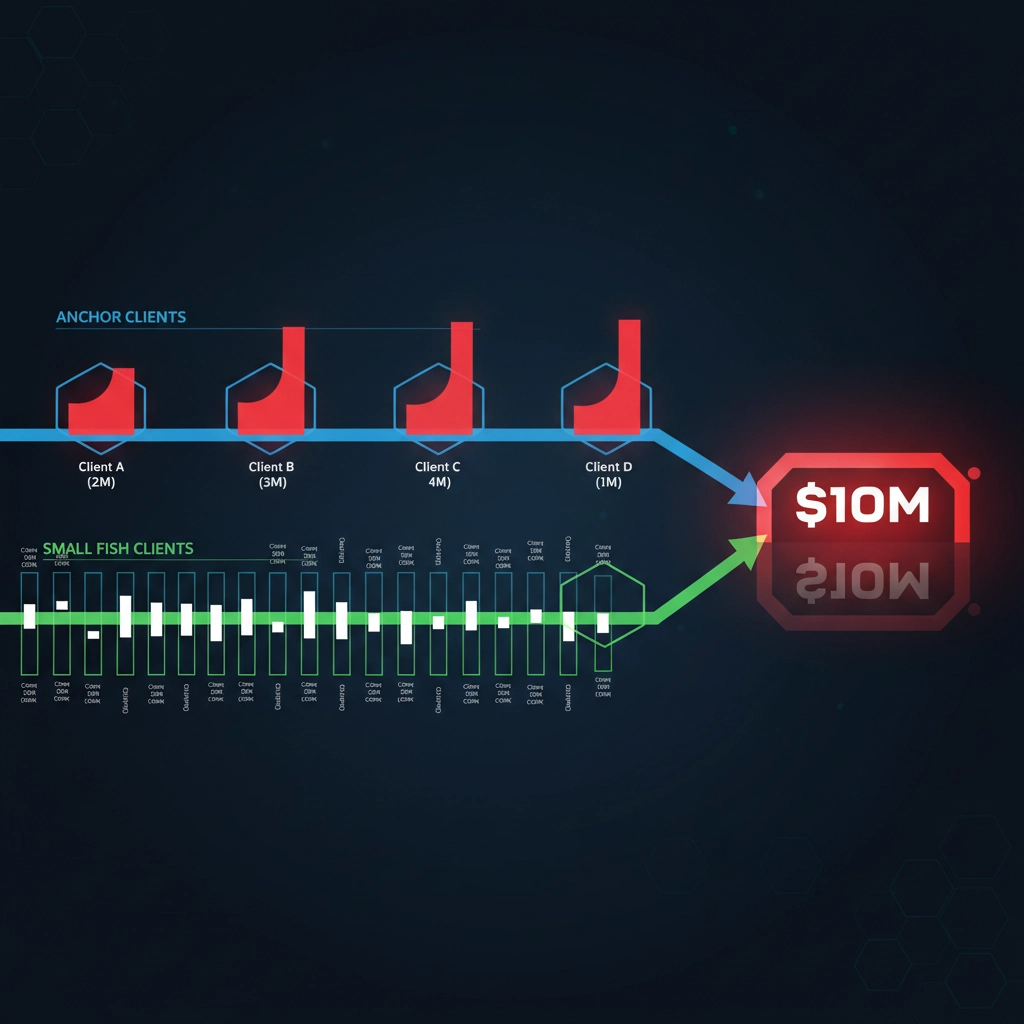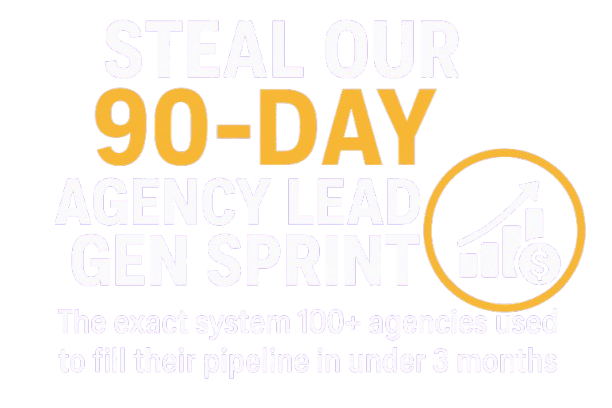
Here's the truth most agency founders won't tell you: there are two fundamentally different paths to $10M, and choosing the wrong one will cost you years of growth. You're either building a portfolio of anchor clients who provide predictable, recurring revenue, or you're chasing volume with smaller clients across a diversified base.
I've seen agencies succeed with both strategies, but one consistently gets you to eight figures faster. Let me break down exactly what each approach looks like, then show you how to pick the right one for your situation.
The Anchor Client Strategy: Fewer Relationships, Bigger Impact
Start by understanding what an anchor client actually is. These aren't just your biggest clients, they're strategic partners who represent 15-35% of your total revenue and provide predictable, recurring engagements over extended periods.
Here's how this plays out in practice: Instead of managing 50 small clients worth $2,000 each monthly, you cultivate 3-5 anchor relationships worth $20,000-$50,000 each. The math looks similar on paper, but the operational reality is completely different.
The Compound Effect of Deep Relationships
With anchor clients, you develop what I call "natural rhythms." You understand their business cycles, decision-making processes, and strategic priorities. This knowledge compounds month after month, making you exponentially more valuable to them while reducing your operational overhead.
One agency owner I work with expanded from simple positioning projects to strategic planning, project leadership, focus group moderation, and marketing planning, all with the same anchor client. That's revenue expansion without customer acquisition costs.

Stabilized Cash Flow Changes Everything
Move from zero predictability to some predictability, and you'll experience a mental shift that transforms how you run your business. Instead of scrambling for next month's revenue, you're planning quarters and years ahead. This stability lets you invest in better talent, superior tools, and long-term strategic initiatives.
The selling cycle becomes dramatically shorter too. When an anchor client needs additional services, you're not competing against unknown agencies. You're proposing expansion of existing successful work.
The Small Fish Strategy: Volume Through Diversification
Now let's examine the alternative approach. The small fish strategy involves serving numerous smaller clients, typically ranging from $1,000-$5,000 per month, spreading your revenue across 20-50+ relationships.
This approach prioritizes diversification over depth. You're building a client portfolio that reduces single-client dependency while exposing you to multiple industries and business models.
Faster Initial Growth, Higher Long-term Costs
Small fish often move faster. Their decision-making cycles are shorter, approval processes simpler, and onboarding quicker. You can scale from zero to $30,000 monthly recurring revenue relatively quickly by stacking these smaller engagements.
But here's where it gets expensive: customer acquisition costs never go away. You're constantly prospecting, pitching, and closing new business. Every client relationship requires ongoing sales effort to expand scope or extend contracts.

Administrative Overhead Multiplies
Managing 40 client relationships means 40 different communication styles, reporting preferences, billing cycles, and project management systems. What starts as manageable complexity becomes operational quicksand that slows down everything you try to accomplish.
Each small client demands attention proportional to their needs, not their revenue contribution. A $2,000/month client can require the same project kickoff time, monthly reporting, and relationship management as a $20,000/month anchor client.
Breaking Down the Numbers: Which Gets You to $10M Faster?
Let's run the math on both approaches to see which path offers faster scaling.
Anchor Client Path to $10M:
- Target: 15-20 anchor clients at $50,000-$70,000 annual value
- Timeline: 3-4 years with proper execution
- Required expansion: 3-5 new anchor clients per year
- Sales cycle: Longer initial acquisition (6-12 months), minimal ongoing sales effort
Small Fish Path to $10M:
- Target: 200-300 clients at $30,000-$50,000 annual value
- Timeline: 4-6 years with consistent execution
- Required expansion: 50-80 new clients per year
- Sales cycle: Shorter acquisition (1-3 months), continuous prospecting required
The anchor approach requires fewer total relationships but demands deeper strategic thinking and longer-term relationship building. The small fish approach requires systematic lead generation and efficient onboarding processes.

Strategic Implementation: How to Choose Your Path
Your current situation determines which strategy makes sense. Here's how to evaluate your position and make the right choice.
Choose Anchor Clients If:
- You have specialized expertise in specific industries or functions
- Your team prefers deep, strategic work over breadth of projects
- You can demonstrate measurable ROI from longer-term engagements
- Your current cash flow can support longer sales cycles
- You want to build a consultative, advisory practice
Choose Small Fish If:
- You offer standardized services that apply across industries
- Your team thrives on variety and quick project turnaround
- You have systematic lead generation and sales processes in place
- You need faster cash flow to fund growth initiatives
- You're building toward productized service offerings
The Hybrid Approach: Best of Both Worlds
Most successful agencies don't choose exclusively between these strategies. Instead, they develop a hybrid model that provides stability through anchor relationships while maintaining growth through smaller client acquisition.
Target this distribution: 50-70% of revenue from 3-5 anchor clients, 30-50% from 10-20 smaller engagements. This gives you predictable base revenue while keeping you exposed to new opportunities and market trends.
Start by identifying which clients have anchor potential among your current portfolio. Look for businesses with:
- Recurring needs for your services
- Budget capacity for expanded scope
- Strategic challenges that require ongoing attention
- Decision-makers who value long-term partnerships
Then systematically develop these relationships while maintaining a pipeline of smaller opportunities.
Execution Framework: Making Your Choice Work
Whichever path you choose, success requires specific operational capabilities and mindset shifts.
For Anchor Client Development:
Position yourself as a strategic partner, not a vendor. Develop industry expertise and proprietary methodologies. Invest in relationship management systems and long-term account planning. Build proposal processes that emphasize ongoing value creation rather than project completion.
For Small Fish Scale:
Create standardized onboarding processes and project templates. Develop efficient lead generation systems and short sales cycles. Build team members who can handle multiple client relationships effectively. Invest in automation tools for communication and reporting.
Both approaches can get you to $10M, but anchor clients typically provide a faster, more sustainable path. The recurring revenue and operational efficiency create compound growth effects that accelerate as relationships mature.
The key is committing fully to your chosen strategy rather than trying to do both halfway. Pick your path, build the required capabilities, and execute consistently. Your agency's future depends on this fundamental strategic choice.
